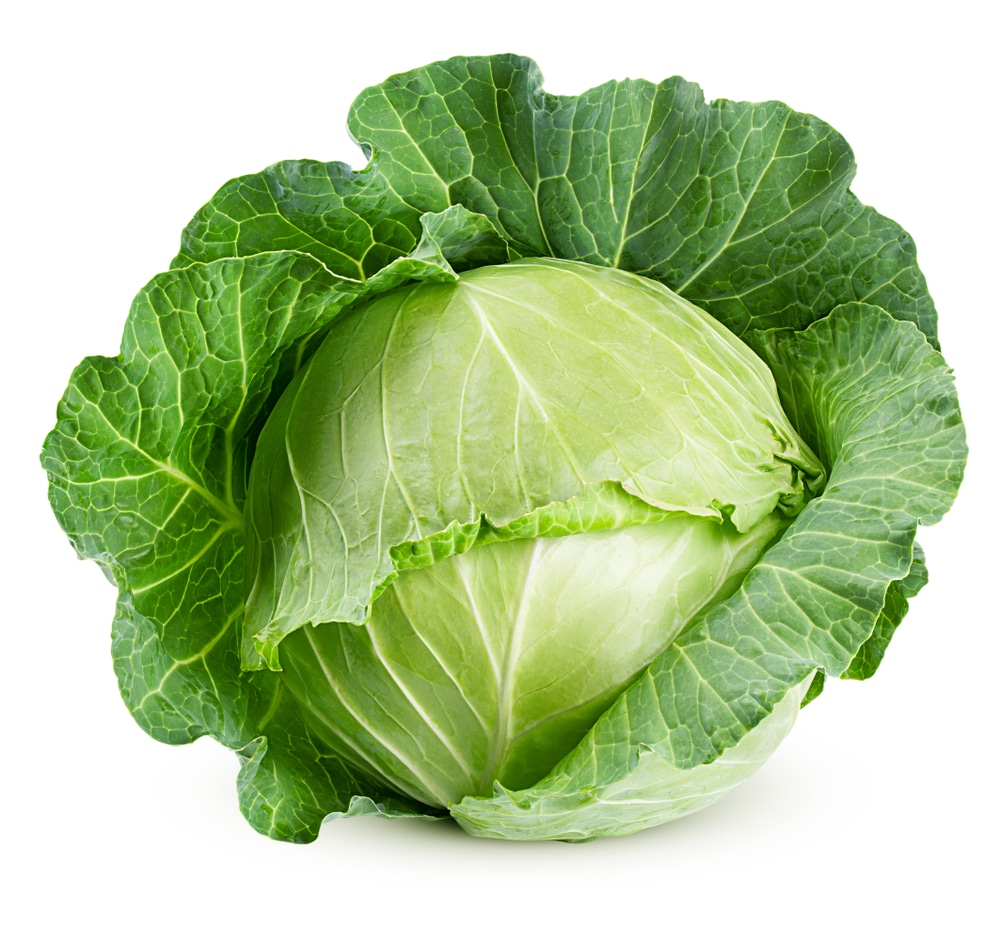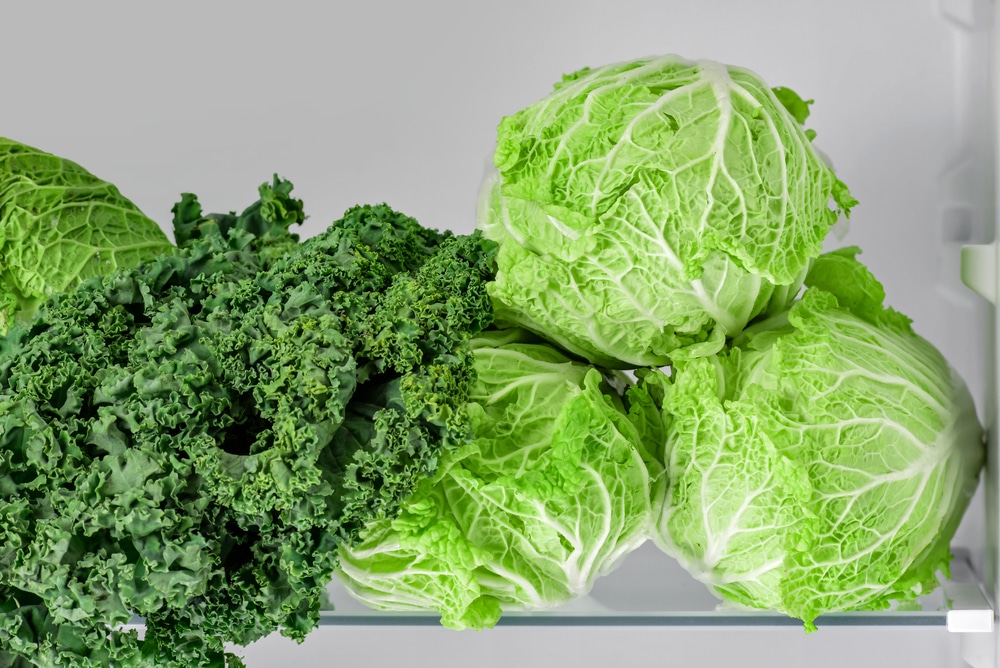Yes, you can freeze Unblanched cabbage for 4 – 8 weeks. Blanched cabbage can freeze for up to 14 months.
When freezing your cabbage, be sure to cleanse all parts of the cabbage thoroughly and follow the freezing directions closely to have the best results.
Cabbage is a high-fiber, mineral-filled leafy vegetable that is not only very versatile in many recipes but can be frozen and used in dishes all year round. Cabbage’s versatility is shown in its many uses, from light coleslaws in the summer to be a delicate component in stews in the winter.
How to Freeze Cabbage

The first decision you will need to make when beginning to freeze the cabbage is whether or not you want to blanch the cabbage.
Blanching is briefly boiling the cabbage before moving it to ice water to stop the cooking process. Whether you want to blanch the cabbage or not boils down to what you plan to use the cabbage for. But can you freeze raw cabbage?
In fact, if you want crisper, more fresh-feeling cabbage, perhaps for a salad type dish, it is recommended that you do not blanch the cabbage. If you plan to use the cabbage in a giant dish such as a soup or stew, blanching the cabbage will be the best method for you to use.
If you choose not to blanch your cabbage, you have some options. Can you freeze shredded cabbage? Yes, you can! Can cabbage be frozen if it’s a whole head? Yes.
To freeze cabbage, First, soak the head of cabbage in a gallon of water with one cup of salt to eliminate any pesticides or bugs remaining in the vegetable. If the cabbage is shredded, simply rinsing the cabbage should be enough to cleanse it.
Place the cabbage on a parchment-lines baking sheet and place it in the freezer. A whole head of cabbage could take up to 8 hours to fully freeze, while shredded cabbage takes about 2 hours.
Once fully frozen, remove the cabbage from the freezer and place it into an airtight container to fight against freezer burn.
If you choose to blanch your cabbage, the process is similar with a few extra steps.
First, cut the cabbage head in half or quarters.
Next, you will blanch the cabbage by boiling the cabbage for 1.5-2 minutes then moving the cabbage directly to ice water.
Drain the cabbage of any excess water and place it on a parchment-lined baking sheet in the freezer.
It will take about 4 hours to freeze completely. After 4 hours, place the cabbage in an airtight container.
Related article: Can you freeze lettuce?
How Long Does Frozen Cabbage Last in the Freezer?

One of the benefits of freezing cabbage is how long it lasts in the freezer. Unblanched cabbage can last up to 4 to 8 weeks. Blanched cabbage can last up to 14 months.
Although the freezing process is essential in making sure your cabbage tastes the best it can, the thawing process is an even more critical step in making sure your cabbage gets from the freezer to the dining room table while still tasting as fresh as it did the day you bought it.
To thaw a cabbage, take it out of the freezer and place it into a covered dish. Put the covered dish into the refrigerator.
This thawing process can take up to two days. Once thawed, drain the excess cabbage from the bowl and start cooking.
This method of thawing is the most natural process to thaw cabbage. Although it is possible to thaw cabbage by running it under warm water quickly, this method tends to break the cabbage down.
How Do I Tell if my Frozen Cabbage has Gone Bad?
The first way to tell whether a cabbage has gone bad is to smell it. If the cabbage smells like decay or ammonia, it has begun to go bad. Throw the cabbage away immediately.
Feeling the cabbage is the next method of determining whether it has gone bad. If the cabbage is soft and has a slimy texture, it is bad.
If there is mold on the outside of the cabbage, this is another tell-tale sign that the cabbage has gone bad.
As a last resort, you can taste the cabbage. A usual cabbage should have a fresh and earthy taste. If you taste a sour or gross taste, the cabbage has gone bad.
Frozen Cabbage Recipe Ideas
Cabbage is a wonderful complimentary vegetable in many dishes. Part of what makes it so versatile is its leafy texture that can be used as a crunchy main ingredient or in more abstract settings like a taco shell in a taco variation.
Here are some recipes that you can use for your frozen cabbage:
1. Ham and Cabbage Soup:
This hearty dish is a great winter soup that can be made in bulk and shared with the whole family. Its main ingredients include ham, chicken broth, garlic, celery, carrots, and cabbage. Warm dinner rolls are recommended to compliment this dish.
2. Cabbage Rolls:
These cabbage rolls are a healthy Italian take on the classic enchilada dish. Ground meat, rice, and tomato sauce with other Italian seasonings are bound tightly and steamed in cabbage leaves. Although they take a little more than an hour to prepare, this is a dish that both your tastebuds and waistline will thank you for.
3. Simple Red Cabbage Salad:
This is a classic german side dish that never fails to please crowds with its simplicity. It requires red cabbage, olive oil, parsley, garlic powder, and only about thirty minutes to make this simple tangy dish.
4. Garlicky Roasted Cabbage Steaks:
This recipe is a bit of a strange concept, but those who have tried cabbage steaks all agree they are a great way to use extra cabbage creatively. It takes less than an hour and only cabbage, olive oil, and other seasonings to make this exciting take on a garlic steak.
Frequently Asked Questions
Here is a collection of frequently asked questions regarding freezing cabbage.
Cabbage lasts about two weeks in the Fridge if it is still whole. Cut lettuce lasts about 2-3 days in the Fridge. Already cooked lettuce lasts about 3-5 days when stored in an airtight container in the Fridge. An air-tight container is very important when looking for longevity.
Mold on cabbage comes in a variety of colors and shapes. These colors vary from white to black. To be thorough when checking for decay, be sure to look at the outside and inside of the leaves.
Freezing cabbage does not intensely change the texture, but freezing does break down the chemical structure of the leaves. The cabbage will likely be slightly more rigid.
While it is possible to thaw frozen cabbage by pan-frying it, this is not recommended due to the water content of the cabbage. The cabbage will become wet and limp before soaking up the oil in the pan. This will cause it to lose its taste. Instead, it will taste like the oil used in the pan.
The rigid center of cabbage doesn’t have many uses in most dishes. If you plan on making coleslaw or salad, it may be worth keeping the cabbage core to add texture to the dish.
Bagged cabbage has a shelf life of about 1-2 months. To ensure the cabbage will last longer than one month, it is best to freeze it to guarantee fresh texture and taste.







